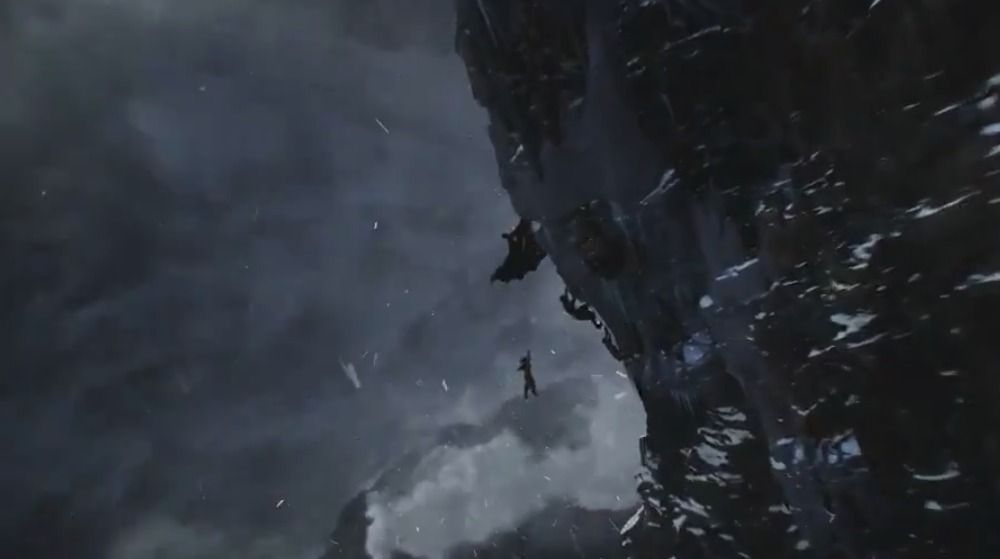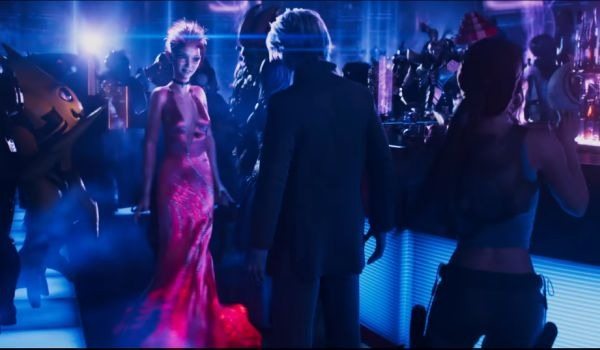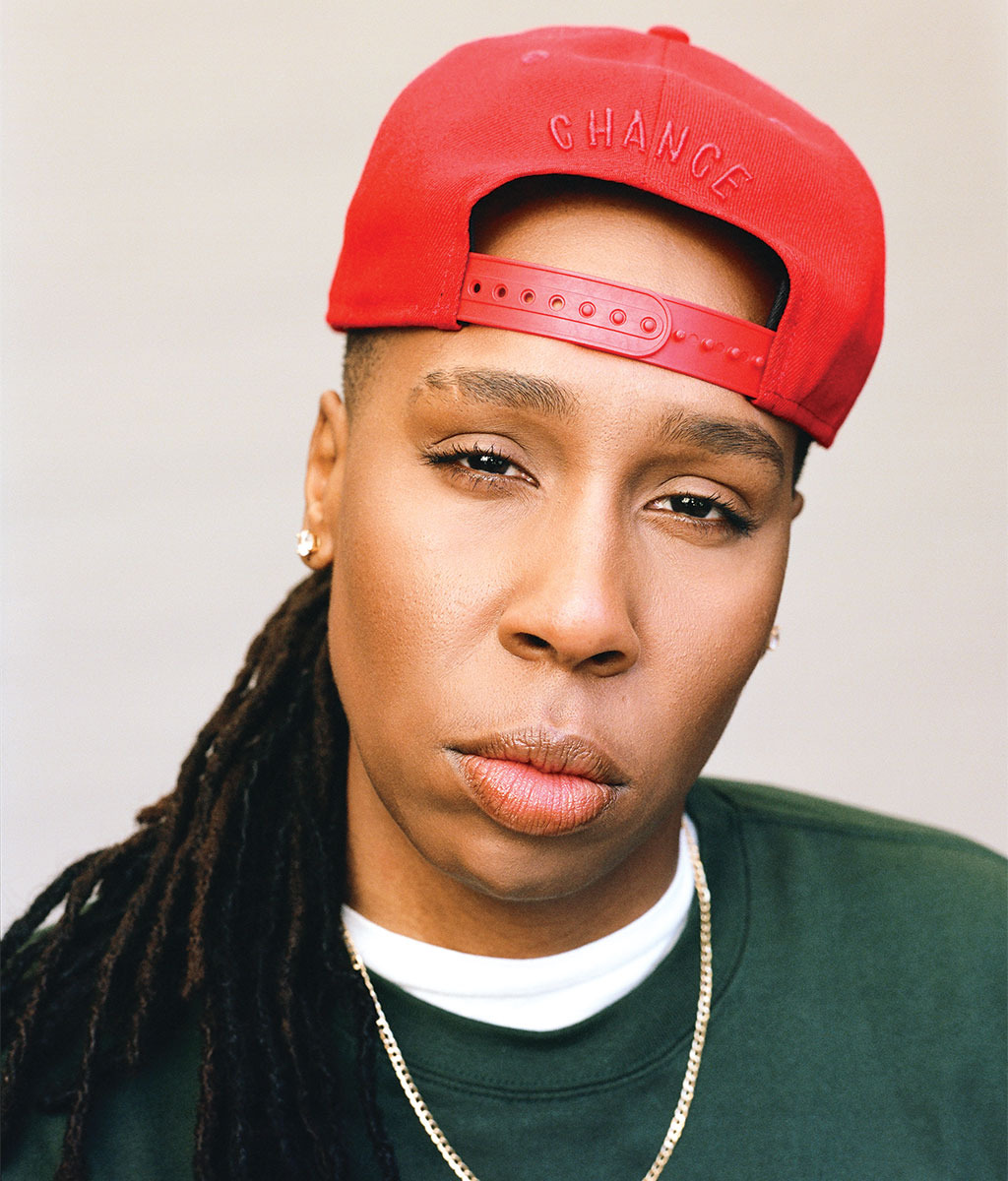April 7, 2018 (updated April 13, 2018)
This is the sixth in a series of posts dedicated to works of videogame literature and theater—not videogames that are literary or theatrical, but rather novels, plays, television series, graphic novels, museum installations, poems, immersive theater, and movies that represent in some fashion or another videogames, videogame players, and videogame culture. For a general description of my critical framework and purposes, see the first post in the series, “What is videogame literature?”
(Spoilers)
Why Ready Player One matters (though I wish it mattered more)
Along with Westworld and Jumanji: Welcome to the Jungle, Steven Spielberg’s Ready Player One signals the coming of age—or maybe the coming into that weird period between gawky adolescence and the moment you discover your friends drew all over your face with a sharpie when you passed out—of what might be called “the videogame movie.”
I see this as a maturation of the market for these kinds of stories as well as what a “videogame movie” might do, whether it’s telling stories about the increasingly widespread presence of videogames in our lives or thinking about the unique storytelling capacities of the videogame as a medium.
In this review, I’m not going to say much about how “good” a movie RP1 is. For what it’s worth, I enjoyed it, and will maybe see it again in 3D IMAX (I saw it in standard 2D) if I can convince the kids. It has rollicking energy for most of its 2-hour, 20-minute run and was funnier than I expected, but the characterization is paper-thin, the romance between Parzival and Art3mis even more feeble than in the Cline original, the plot full of holes, and one of the Asian characters somehow knows how to do karate stuff. I give it a generous B+.
What I’m reviewing here isn’t the quality of the movie, but what it does with videogames and videogame culture, including (1) flattening the sociohistorical dimensions of Cline’s novel, (2) its fumbling of politics, (3) the treatment of gender and female characters, and (4) its “message” about videogames and online community.
Even with a full-body VR suit and these stupid 3D glasses, it’s awfully flat
For worse and better, Cline’s novel is a Wikipedic repository of 1980s cultural trivia. Regardless of how one feels about that (and lots of people hate, hate, hate it), those references serve a purpose, two actually. They celebrate 1980s white, middle-class nerd/pop culture as an evergreen source of resistance to the alienating effects of globalist capitalism. And they immerse the reader in the pathologically obsessive-compulsive behavior of the gunter community. We may not like how Cline does what he does, but he does it for a reason.
Not from the 1980s
Though it has its fair share of 1980s references, Spielberg’s RP1 is no paean. Indeed, two of the more memorable images don’t come from the 80s: the Iron Giant that Aech builds in their garage comes from Brad Bird’s 1999 film, and the dance that Wade and Art3mis perform at the Distracted Globe is set to the disco beat of the Bee Gee’s 1977 mega-hit “Stayin’ Alive.” The majority of games referenced in the film are from games released after the 1980s; notably, Mortal Kombat (1992) and Doom (1993). There are no references to tabletop roleplaying games, interactive fiction, or old games played on old computers. As a consequence, the gaming culture that birthed the OASIS and that provided the young Halliday a sense of pride and security is erased.
But that shouldn’t surprise us. The movie begins with a Big Gulp-sized exposition dump courtesy of a voiceover by Wade (Tye Sheridan). And while Wade fills us in on all things OASIS—and we are dazzled by all the fun photorealistic CGI things one can do in it (including, yes, please, climbing Mount Everest with Batman)—he doesn’t mention the energy crisis, the collapse of the global economy, the nuclear annihilation of national capitals, the pandemics, refugees, or myriad other catastrophes against which Cline set the adventures of the High Five. Presumably for reasons of narrative economy, the first part of the novel—where the reader learns about Wade’s desperate personal situation and his bone-deep cynicism—is jettisoned. But those are the “philosophical” pages of Cline’s book. And it is in those pages that the reader has crammed down their throat learns all kinds of stuff about 1980s nerd and pop culture, a culture that is not just about videogames, but sitcoms, music, table-top roleplaying games, MTV, magazines, hacker culture, computers, interactive fiction, and movies. It is in those pages that we come to understand the abuse and precarity of Halliday’s childhood and the reasons for his narcissism.
Climbing Mount Everest with Batman is my coffee and donuts
The flattening of history is evident on an even deeper level. In a previous post, I defined the notion of “procedural adaptation,” which refers to the way a film or book or comic remediates the mechanics of videogames for purposes of storytelling, characterization, or thematic development. Westworld, for example, constructs its narrative around the mechanics of respawning. Spielberg’s RP1 shows little interest in the rich range of game mechanics explored in Cline’s novel. And it doesn’t spend a moment on the integration of videogames with social media, big data, community building, bullying, and the like. Ready Player One hangs a limited roster of game mechanics—with special emphasis on shooting—on the tried-and-trusty framework of the summer blockbuster. And it ignores forms of play that privilege mindfulness, quiet persistence, and collaborative problem solving. For Spielberg, videogames = action.
Which makes Ready Player One a popcorn-friendly action movie, but a dumb videogame movie.
Welcome to the rebellion! So, what are we rebelling against?
As I’ve argued elsewhere, one of the several problems with Cline’s book is its politics—its libertarian leanings, for one thing, but especially its failure to understand that if the OASIS were truly a place where half the people alive in the world spent their days learning, working, socializing, and playing, it would be rife with political movements, messaging, and activism. That ideological and authorial failure extends to Cline’s characterization of Art3mis who, though she occasionally takes Wade to task for failing to recognize his social responsibilities, is not involved in any kind of political organizing and never mentions, say, endemic starvation in her blog.
Bae Guevara
Which is why I was so thrilled by the moment in the film when Wade is kidnapped, bundled to a seedy warehouse with a pillowcase over his head, and discovers, Art3mis, sitting on a camp chair, rubbing her hands together, auburn hair tossed over one eye. “Oh, here comes the politics,” I thought. And when Samantha Evelyn Cook hit her line with just a touch of vocal fry–“Welcome to the rebellion . . . Wade”—I thought, “Go! Go! Intersectionality!” But the promise of that moment is squandered. Though it appears Art3mis is part of some kind of, um, clandestine indoor-camping cadre, we never learn its purpose or principles, never see it accomplish anything.
Thanks for the invite, Art3mis, but what exactly are we rebelling against?
Perhaps it’s just too many advertisements. In one of the film’s best lines, Nolan Sorrento (Ben Mendelsohn) brags to the IOI board that, if they can win control of the OASIS, they will fill 80% of a player’s view with pop-ups—just shy of the amount that would trigger seizures. (Come to think of it, that’s a pretty good description of the film’s visual design . . .) Sure, Sorrento’s a stereotypical villain, entirely willing to blow up a housing block, hire a trained assassin (Hannah John-Kamen) equipped with requisite bad-girl bangs, or chew the green-screen scenery. But he comes across more like a bad-ass apple than an expression of systemic greed.
Bangs are peaky blinders for girls
But what was I expecting? Cline’s politics are muddy; Spielberg’s corny.
The joke about the 300-pound dude named Chuck is still awful
Among the more infamous faults of Cline’s book is its treatment of gender. TBH, I find the argument that Cline’s novel is transphobic a bit hyperbolic. It ignores the way Cline frames the book as a story told by a young, cis, white male whose subjectivity has been deeply wounded and whose masculinity is entirely precarious. But for sure, the novel fails to delve into one of the most exciting things about virtual community: the ability to determine who we are and what we look like regardless of our appearance IRL. And one of the novel’s best characters—Aech—is revealed as transgender at the novel’s conclusion, rendering them an afterthought rather than an opportunity to cast some shade on Cline’s glittering straight-white-male nerdtopia.
So, there’s this “joke” in the book about attractive female avatars being the catfish disguises of a “300-pound dude named Chuck who lives in his mother’s basement in suburban Detroit.” It’s a stupid line, transphobic and trafficking in one of the more fatigued stereotypes of videogame players.
And joy! It’s in the movie! But, curiously, the line isn’t Wade’s, but Aech’s, who uses it to tease their friend when they discover the latter’s crush on Art3mis. And, equally curious, the person who is most surprised by Aech’s IRL identity isn’t Wade, who seems to take it in stride, but Art3mis, who stares agape for a comic beat before pivoting to the sorry state of Aech’s van. There’s nothing especially cringeworthy here, though as Slate‘s Laura Hudson rightly notes, Art3mis plays the utterly conventional female role of providing an amoral male hero a reason to be committed to a cause, complementing the fridging of Wade’s Aunt Karen earlier in the film. And if it didn’t make me cringe, I did have a certifiable “Wai-wha?!” moment when Art3mis, having jumped and climbed her way across the swirling zombie void in The Shining sequence, didn’t take Karen Underwood in her arms and give her a big third-act-hetero-action-adventure-rescued-the-girl-so-role-the-credits kiss. I mean, it’s just a game, right?
Frankly, I’m not sure where to land on the question of gender. Should we be surprised that three old men (Spielberg, Cline, and script co-writer Zak Penn) have trouble imagining a world where the differences between avatars and IRL identity is taken for granted? Where people accept that our identities are fluid, situational, a matter of choice rather than law, a function of our own eyes rather than the beholder? Should we be surprised that they don’t understand that when a queer woman says something sexist or transphobic, it can still be sexist or transphobic?
And should we be surprised that there is something very wrong about the film’s treatment of female bodies? In Cline’s book, Art3mis and Aech are described as curvy, heavy women. Wade describes Art3mis as “short and Rubenesque. All curves” (35), and Aech describes herself as a “fat black chick” (319). In the movie, not only is Art3mis played by the winsome Cook, but her OASIS avatar is even skinnier, and her inhuman thinness is amplified by the way her avatar moves, her limbs extending, her costume flowing ahead and behind in contrast to Wade’s more grounded, weighty, action-hero movement. And Lena Waithe, who plays Aech, is hardly “fat.” To Cline’s credit, he affirms in his book a fat-positive sensibility and highlighted the deleterious health effects of playing videogames all day (Wade characterizes himself as overweight and out of shape). But the film has none of that. And that’s a sexist shame.
Rubenesque
(Peter Paul Rubens, The Three Graces [1630-35])
Not Rubenesque
Also not Rubenesque
That said, the film does make a few positive changes to the plot of the book that distribute the action-adventure agency to the High Five’s non-male members. Though Art3mis spends a few Princess-Peach minutes trapped in the IOI castle and must be rescued by the other High Fivers, she demonstrates grit, wit, and improvisatory skill after her escape. Likewise, Aech’s identity is revealed more quickly than in the book, enabling her to play a bigger role in the film’s final act, both in the OASIS and careening around the streets of Columbus.
And let it be said that for all that is wrong about Spielberg’s Ready Player One, there is one thing that is utterly and completely right: Lena Waithe.
If this is wrong, I don’t want to be right
Kids, put down those controllers and march bravely into the great outdoors to, um, watch movies
So, no surprise, what the movie has to say about videogames is corny and underinformed. The production team would have greatly benefited from some expert advice—ideally from a feminist/queer expert—on online community and virtual reality. It would have benefited from the advice of videogame players who play games other than first-person shooters.
The moral of Spielberg’s Ready Player One is that we need to get out in the real world and connect with each other.
Or at least see movies where people get out in the real world and connect with each other.
But why should we? The movie doesn’t show us a thing about the negative effects of online life, and is thoroughly ignorant about the way online life empowers individuals and communities, the way online life enables individuals and communities to define their situations, practice problem-solving, enact alternative worlds. I mean, if the OASIS can be anything you want it to be, then one would expect there to be entire planets devoted to, say, queer futurity. And where, my dear OASIS search-engine-host, can I find Planet Themyscira?
The cornball ignorance of Ready Player One is captured in its final line. “We closed the OASIS on Tuesdays and Thursdays,” Wade tells us as he spoons into Art3mis. Now, don’t get me wrong: I love to cuddle with my partner in the slanting late afternoon sun as much as the next person, but I also love to march with her to protest moronic gun laws, to work with students to develop their creative writing and coding skills, and do my best to think about who I am and what I want to be as a person, a professional, and a member of my family and my community. And I love to play videogames with her. But were my business housed in the OASIS (see Chris Plante for a smart read on this), were my students located in cities and villages thousands of miles away, were the activists with whom I was collaborating scattered across time zones or in situations that required the anonymity of an online environment, I’d suit up an avatar army, charge whatever castle Wade was hanging in, and demand my rights to be online any damned time I want.








